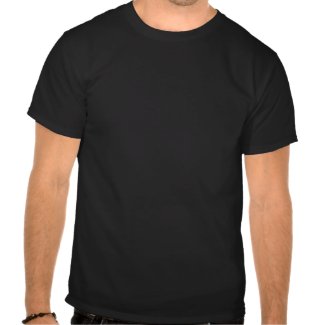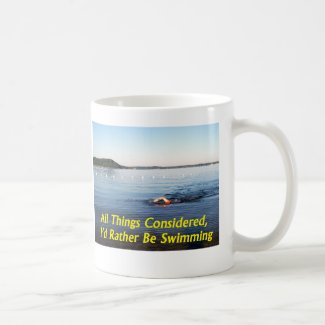This is type of open water swimming is dangerous. However, when done with an experienced swimmer, this type of swimming is STILL dangerous. Please take care when planning your outing. Ideally, any night swimming should include a few people and an escort kayak.
Night swimming or swimming before sunrise, is something to be experienced. If you are lucky or plan well, the moon and stars will be out. The star and moon view is simply stunning. For some , night swimming is a necessity for event training. For others, its about experiencing something different, getting out of comfort zones or pushing boundaries.
The thoughts and techniques outlined below are my experiences/techniques during night swimming. Yours may be different and I am by no means an expert but I thought its worth sharing. It is difficult to find any information on what do to in order to swim in the black of the night. Please take care if you decide to undertake a moonlight outing.
Time of Day
In many cases the swimmer can/should choose carefully when to swim in the dark - evening or morning. If you have a choice, you need to consider a few factors before deciding on when to enter the water.
At WNB, the best moon light is in the morning. The image above is about 4am and shows the setting moon and the light reflecting on the waters. The moon sets in the west over Center Island(NY). From about 3am to sunrise, the moon shines right at WNB beach. When you start swimming in the dark, start with the initial swims during full or near full moon with clear skies. Like all weather its impossible to arrange but if it happens, take advantage of it. A moon lit swim at night offers extra navigational tools using the light on the water and the moon can be used as a sight point.
There is many things to think about when you start swimming in the dark. The moon is VERY comforting during these initial attempts, a friend.
The boat traffic in the pre-sunrise morning is fairly predictable. Clammers are out just before sunrise and go to certain spots in the harbour, depending on tide. I swim north , close to the shore and stay away from any of these lanes . Evening boat traffic is less predictable and , honestly, contains DWI boat drivers and stupid drivers. It is suggested to stay away from that group of boaters in the dark. It is one of the main reasons to swim in the early AM, rather than in the evening. If you have escorts and well lit swim party , it does offset the boat issue in the evening.
Seasonal :
When swimming in the morning, my timing is to be at the beach 90 minutes before sunrise. This allows 15 minutes to get into the water and over an hour of swimming before sunrise . I like to combine dark swimming with morning light swimming. This means that start times will be very very early in the summer.

For that reason, I tend to do most of my night swimming in the fall, with a few 4am runs in the summer when its practical.
Visibility : ( Boats seeing You )
This year, Carol Moore ( the POD-Mother ) of WNB introduced swimmers to a personal buoy for Open Water swimmers. In the day times, its very useful. In the night, stuff this buoy with two or three glow sticks. This will light up the buoy and at a distance clearly identify "something" in the water.
As a second visible method, attach several glow sticks to your wet suit or around your bathing suit when you are without wetsuit . Take a simple boot lace and tie it around your waist. Attach the additional glow sticks ( one , two or three ) . I use green and red colors.
Body Balance
It would be fair to believe that swimming in the dark requires no stroke change or modification. My experience would suggest that is not completely true and consideration for the dark conditions must be observed for a joyful or efficient swim experience. Swimming in the dark can be incredibly disorienting. Your balance will be all off due to the lack of normal balance points. You sighting will be off due to lack of points of reference and shore markers. You need to compensate
The first time I saw swam at night for any length, I thought I was going to fall over when I walked out of the water ( or at times thought I was going to be sick in the water ). As you swim, you will be disorientated in several very specific ways.
1) Which way is down for my head . When do i stop moving my head
2) How do I breath or where do I breath.
3) Where am I ( am I swimming straight ?
Normally when we swim we use our eyes to help keep balance and body position. Try swimming with your eyes closed and you get the idea. Add waves ( a different topic in night swimming ) for an higher sense of disorientation. Without some light, it becomes difficult to maintain good body position and proper balance. Finding the right place to finish your head movement below the water can be accomplished with a few techniques. Remember your body glow sticks. They don't give alot of light but they give some. It that can illuminate the water around you . Get used to that low light and focus on keeping you head down ( as normal ). Instead of trying to use only your eyes, add to it your head's movement timing and the feeling of your head moving with your body. Think hard about your head and neck from the point of breathing to proper head down position. Practice it in the pool. Keep that motion constant , smooth and minimise the effort. And Look for the glow from the sticks.
When your head comes up to get a breath, look for shore or sky spotting marks - a house light, a street light, a star cluster or the moon. If your planning is good, you have a full or partial moon and stars. Cold Spring Harbor ( the best place in the world to Open Water Swim, IMO ) , the moon sets perfectly over the harbor. The moon can be both a north bound spotting mark and a source of light. It can illuminate the water just enough to aid in the disorientation issue.
At the start, take the swim slow. Don't try to push your speed until you get comfortable with head movement and reducing disorientation.
- use the glow of the glow stick to help find "down" when your head is in the water
- time your head movement ( in pool and in OW ) and keep it very consistent. Keep head movement to a minimum
- look for breathing sight points on each breath.
Sighting
How the do you sight in the dark. ? First, place flash light ( I also use a RED glow stick with the flash light ) at your exit point from the water. It provides you a guaranteed end point for the swim and something to see on the trip back. Its a sight point for the way back. In the dark you need to sight more often. Given a lack of proper sighting while swimming, you will swim in a circle ( image below is case in point .. A swim of mine ( Ken, Lisa as well ) in the fog without sighting points as plotted by GPS).. Look for your end points, shore marks, etc. Do not believe that you will just swim straight. In the dark, sight more often.

Next : North Shore wave swimming







